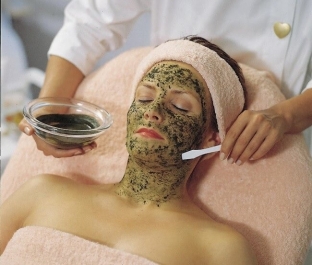Competition in the market of beauty products is growing every year: there are more and more new cosmetic products for face and body care, which actively use not only the beneficial substances of wildlife, but even materials such as, for example, minerals. One of the most famous representatives of the aquatic world, which is widely used in the manufacture of cosmetics, are a variety of algae. Due to their beneficial properties, they are part of creams, masks, balms and other cosmetics. On estet-portal.com read about the beneficial properties of the most effective types of algae in cosmetics.
Why is the use of algae in cosmetics so popular
The use of algae in cosmetics has become such a common phenomenon not so long ago. These living organisms live in the seas and oceans, where they are actively saturated with minerals, trace elements and vitamins directly from the water.
An amazing fact: the mineral composition of algae is as close as possible to the composition of human blood plasma, which is why algae are so related to the human body.
The use of algae-based cosmetics allows you to saturate the skin with useful substances as much as possible, while not fearing any negative consequences and adverse reactions.
Use of algae in cosmetics:
• unique composition – reason for the widespread use of algae in cosmetics;
• algae in cosmetics: the most popular representatives.
The unique composition – reason for the widespread use of algae in cosmetics
As you know, algae are widely used in cosmetics due to their special composition and the beneficial effect they have on the human body. The composition of algae includes such useful substances as:
• alginic acid and alginates – have a moisturizing effect, remove toxins from the body, heal wounds;
• proteins and lipids – are building material for cells;
• amino acids – I participate in all cellular processes, promote the absorption of minerals and vitamins;
• calcium, potassium, magnesium, sodium, phosphorus – are also a kind of building material for body cells;
• copper, zinc, iron, bromine, nickel – are components of hormones and important enzymes of the human body;
• a large number of vitamins, each of which performs its important function in the body.

Algae in cosmetics: the most popular representatives
Not all known algae have found their application in cosmetics. There are several representatives of these organisms that are the most popular components of skin, hair and nail care products:
1. Fucus – brown algae contains fucoidan and alginic acid, thanks to which it perfectly moisturizes the skin, strengthens the immune system and removes toxins and toxins from the body.
2. Laminaria – representative of brown algae, contains a huge amount of iodine, phytohormones and polysaccharides, due to which this algae in cosmetics is a leader in antiseptic properties. In addition, kelp cleanses blood vessels, reduces blood viscosity, and effectively fights skin aging.
3. Lithotamnia – red algae, which is an important source of magnesium, calcium and chromium. It actively replenishes the missing moisture in the dermis, and also relieves spasm and has a relaxing effect.
4. Porfira – red algae rich in vitamins, proteins and fatty acids. Porphyry softens, nourishes the skin and strengthens its antioxidant defenses.
5. Spirulina – blue-green algae, which contains more than two thousand active ingredients. Spirulina is widely used in cosmetology, as it nourishes the skin well with nutrients, tones and tightens it, stimulates the synthesis of elastin, collagen and hyaluronic acid.
Despite the specifics of their life activity, due to their rich composition and useful properties, algae in cosmetics are currently widely used.
They are able to actively influence the skin, moisturizing, toning, soothing and healing it, while significantly improving the appearance of the skin. Algae cosmetics allow the skin to shine from within, radiating health, youth and beauty.







Add a comment